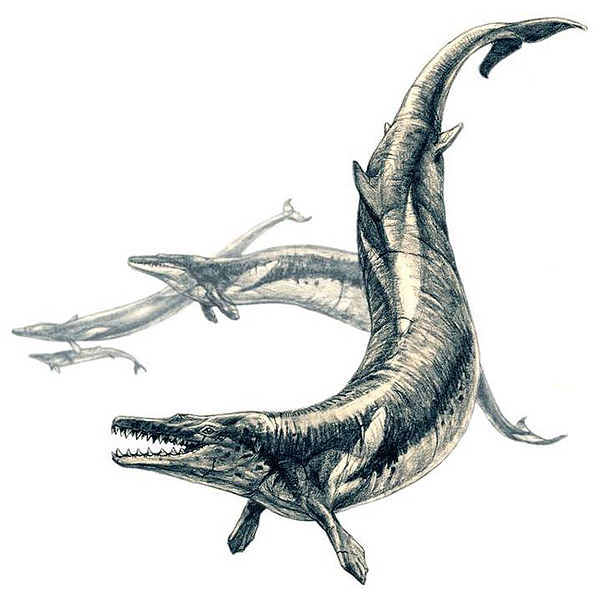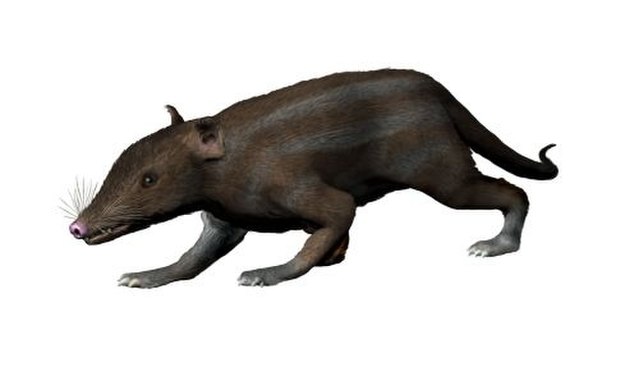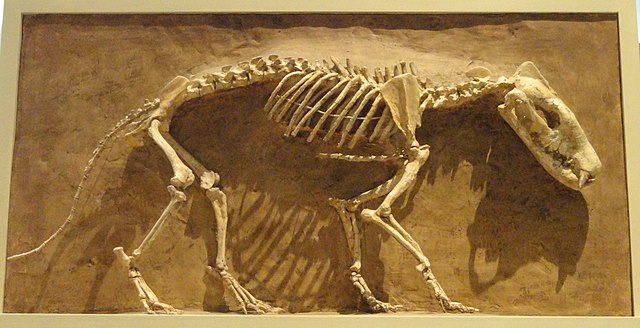The Cenozoic is Earth's current geological era, representing the last 66 million years of Earth's history. It is characterised by the dominance of mammals, birds, and angiosperms. It is the latest of three geological eras, preceded by the Mesozoic and Paleozoic. The Cenozoic started with the Cretaceous–Paleogene extinction event, when many species, including the non-avian dinosaurs, became extinct in an event attributed by most experts to the impact of a large asteroid or other celestial body, the Chicxulub impactor.
Rock deposits from the Cenozoic Era (Torre Sant'Andrea, Salento, Italy)
Basilosaurus
Megafauna of Pleistocene Europe (mammoths, cave lions, woolly rhino, reindeer, horses)
A mammal is a vertebrate animal of the class Mammalia. Mammals are characterized by the presence of milk-producing mammary glands for feeding their young, a neocortex region of the brain, fur or hair, and three middle ear bones. These characteristics distinguish them from reptiles and birds, from which their ancestors diverged in the Carboniferous Period over 300 million years ago. Around 6,400 extant species of mammals have been described and divided into 29 orders.
Restoration of Juramaia sinensis, the oldest-known Eutherian (160 mya)
Fossil of Thrinaxodon at the National Museum of Natural History
Hyaenodon horridus, a North American species of hypercarnivore within the now-extinct order Hyaenodonta, at the Royal Ontario Museum. The genus Hyaenodon was amongst the most successful mammals of the late Eocene-early Miocene epochs spanning for most of the Paleogene and some of the Neogene periods, undergoing many endemic radiations in North America, Europe, and Asia.
Sexual dimorphism in aurochs, the extinct wild ancestor of cattle







